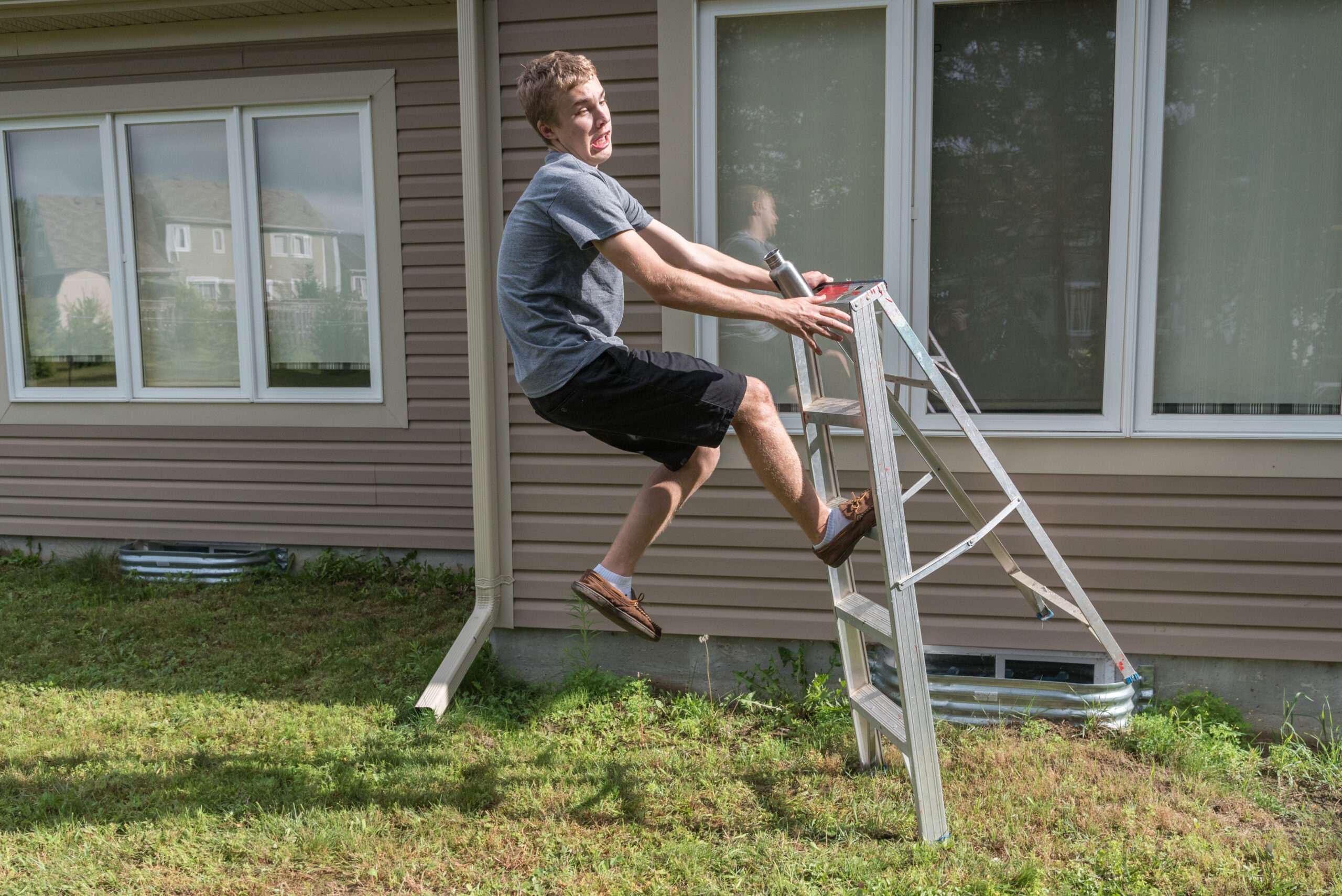
When teenagers start growing during puberty, their growth starts from the outside in. This means that the skeleton grows in order – hands and feet grow first (which you will notice with the constant need for new shoes and sneakers), followed by shins and forearms, and finally femurs (thigh bones) and upper arms.
At the end of puberty, the growth plates on the long bones fuse meaning that the long bones cannot grow anymore. However, a teenager’s spine continues to grow.
The average boy is growing fastest between 14 and 15. Girls start earlier, growing fastest when 12 and 13. Girls also end their growth spurt earlier at 18, while boys need another two years before they finish growing aged 20.
Teenage boys have a delayed growth spurt for a reason. When they enter the growth spurt, they start with longer legs, then they grow quickly and then the growth plates fuses at the end of their teenage years. This delayed growth spurt is the mechanism that leads to men being taller than women on average.
Cells called osteoclasts in the bone produce an acid which destroys and reshapes the bone allowing the bones to be sculpted and shaped as they grow.
There is a big range in when and how much teenagers grow. If you look at a class of 12-year-old girls can be as much as 16 inches (41 cm) difference in the height of the smallest and tallest girls in the class.
During an intense growth spurt teenagers’ bones grow faster than their muscles, ligaments, and integration of the nervous system.
This means that muscles lag well behind and this can impair the strength of teenage limbs for a while. The voluntary nervous system is lagging behind bone growth too. The voluntary nervous system passes on information to the brain about where the body is in 3D space as well as controlling movement of the skeletal muscles. When teenagers go through an intense growth spurt, their nervous systems have to reintegrate and recalibrate all the information about the size, shape, speed and movement of their limbs.
At first, the nervous system will make little mistakes and over or underestimate which physical movement is appropriate. These little miscalculations about the relationship of the body and the environment e.g., stairs, bowls of cereal, pints of milk – can lead to mistakes. This is one reason why during growth spurts teenagers are more likely to trip up and knock things over. Indeed an Italian study (Bisi et al 2016) of 80 teenagers reported that those boys who had grown the most (3 inches in 3 months) were the most clumsy.
Teenagers may feel very awkward about their new and changing bodies. Towards the end of childhood, they probably felt increasingly dexterous, strong and balanced. Now, for the first time they may feel like they have less control over how they move and look. This loss of physical confidence and social confidence can lead to clumsiness brought on by feelings of self-criticism and awkwardness.
Teenagers are also going through huge brain reconstruction and although they may be adult sized with adult sized feet, they do not have an adult’s ability to read other people’s movements and body language in public. This means teenagers can end up bumping into people and getting under people’s feet, as they may not notice other people or read their facial expressions. Teenagers are not well able to read other people’s intents well at this stage of their brain development. Indeed, they may be less able than younger children to assess another person’s facial expressions and intent.
This can lead to adults thinking teenagers are rude and pushy when they are more likely to be completely oblivious to people around them.
Bisi & Stagni (2016) ‘Development of gait motor control: what happens after a sudden increase in height during adolescence?’ BioMedical Engineering OnLine 2016 DOI: 10.1186/s12938-016-0159-0